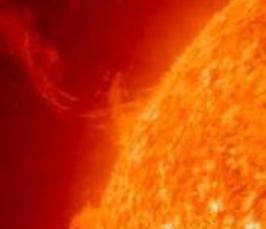ESP Online Seminar: Interface Region Imaging Spectrograph views of how the solar (B. de Pontieu) atmosphere is energized
ESPOS
- Date: Nov 30, 2017
- Time: 11:00 AM - 12:00 PM (Local Time Germany)
- Speaker: Bart de Pontieu
- Lockheed Martin Solar & Astrophysics Laboratory
- Location: Lockheed Martin Solar & Astrophysics Laboratory (broadcasted at MPS)
- Room: Auditorium
- Host: Andreas Lagg

At the interface between the Sun's surface and million-degree outer atmosphere or corona lies the chromosphere. At 10,000K it is much cooler than the corona, but also many orders of magnitude denser. The chromosphere processes all magneto-convective energy that drives the heating of the million-degree outer atmosphere or corona, and requires a heating rate that is at least as large as that required for the corona. Yet many questions remain about what drives the chromospheric dynamics and energetics and how these are connected to the transition region and corona. The Interface Region Imaging Spectrograph (IRIS) is a NASA small explorer satellite that was launched in 2013 to study how the Sun's magneto-convection powers the low solar atmosphere. I will review recent results from IRIS in which observations and models are compared to study the role of small-scale magnetic fields in the generation of violent jets and how these jets feed plasma into the transition region and hot corona.